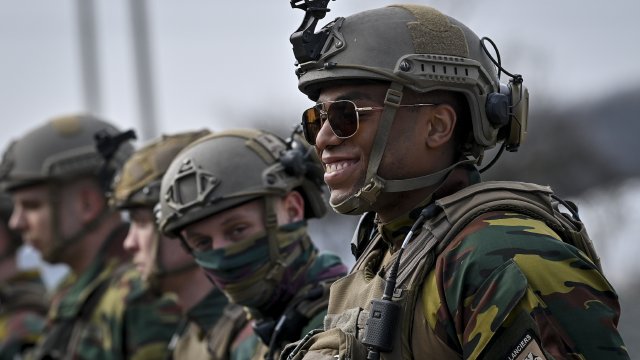Major General Jean-Pol Baugnée was inaugurated as the new leader of Belgium’s largest army component, the Land Force, in Brussels this week.
Baugnée, taking over from Major General Pierre Gérard, succeeds in commanding the most significant of Belgium’s four military divisions.
The handover took place in a spectacular military ceremony at Park Cinquantenaire in the presence of Defence Minister Ludivine Dedonder.
A professionally accomplished officer, Baugnée formerly commanded the Ardennes hunter battalion based in Marche-en-Famenne.
Baugnée was vested in his new position by Defence Chief Admiral Michel Hofman, who emphasised that “one turns” to the complex Land Force in a crisis, whether to assist the federal police with armed soldiers on the streets or help protect the country's nuclear power plants.
The Land Force also assisted during the Covid-19 crisis, the “Red Kite” operation helping to evacuate 1,600 Belgian citizens and dependents in August 2021 from Kabul following the Taliban’s resurgence in Afghanistan, and during deadly floodings in Wallonia in the summer of 2021.
Related News
- Belgian Army announces campaign to find 4,000 new recruits by 2024
- Interview: Belgian Defence Minister pledges to rebuild country’s armed forces
- Belgian Army suffering from high training dropout rate
“Our units are always ready to intervene”, said Hofman, addressing the audience gathered on the Cinquantenaire esplanade and a dozen military detachments, amidst shots fired by the Brasschaat artillery battalion.
The Land Force employs roughly 9,000 personnel, civilian and military, from the approximately 27,000 soldiers serving in the Belgian Armed Forces.
They are mainly located within its motorised brigade and the Special Operations Regiment (SOR), a special operations regiment overseeing para-commander units. On average, it supplies 70% of Belgian soldiers participating in overseas operations.
Starting this summer, around 600 soldiers from the “Khaki” division will be deployed to Baltic countries, Romania, and Poland to strengthen NATO’s eastern flank.
The move is a response to Moscow’s 2014 annexation of the Crimean Peninsula and its invasion of Ukraine.
“The last such deployment took place ten years ago,” emphasised General Gérard, noting it as a “sign of the reactivity” of the division he is leaving.

